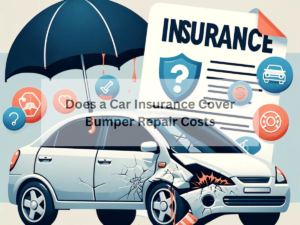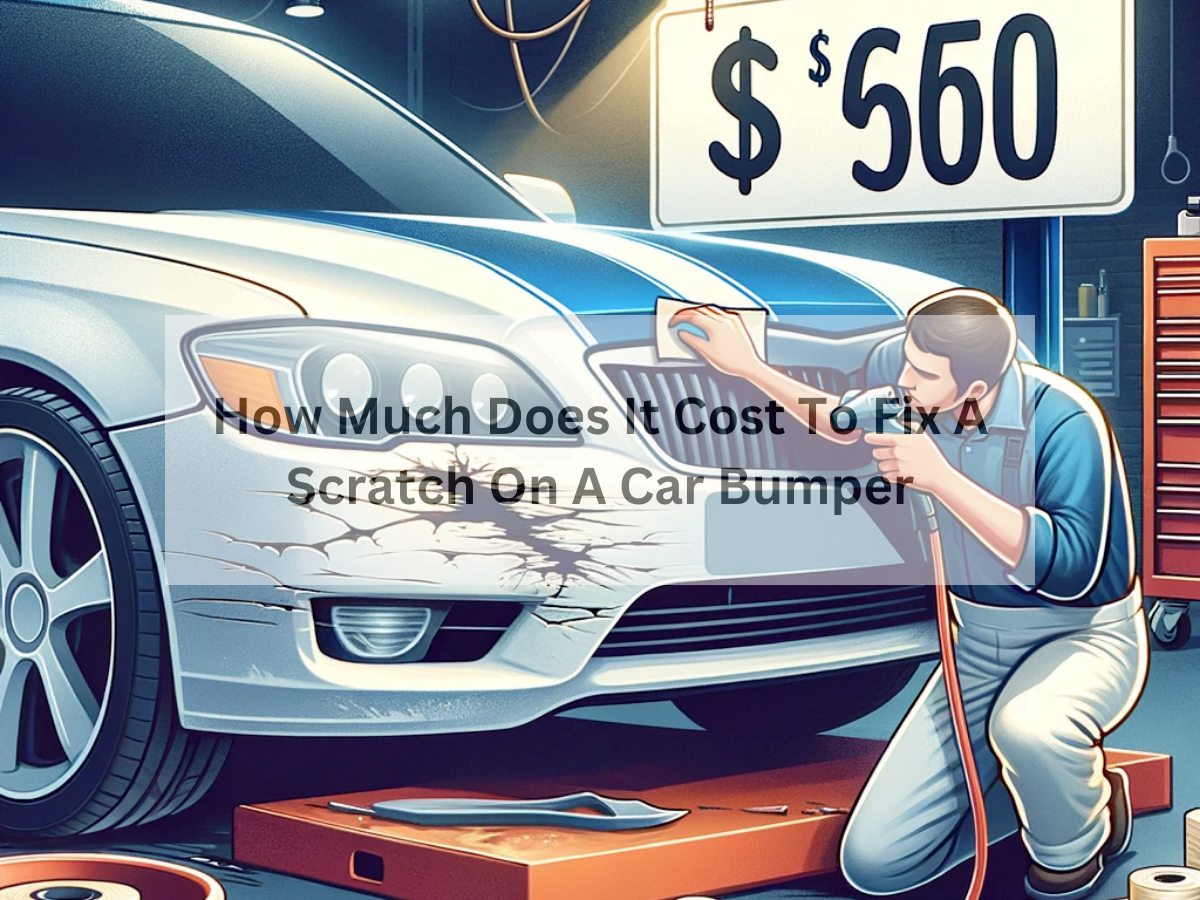Is your name Maaco? Because just like fixing a scratch on a car bumper, you’ve got me wondering about the cost of repairing the sparks flying between us! But on a serious note, let’s talk about how much it really costs to fix a scratch on a car bumper. It can be a hassle, and I can share some insights or recommend reliable professionals to help you out with it. Ensuring the quality of repair is crucial and getting the right advice can save you time and money!
The cost to fix a scratch on a car bumper can range from $50 to $600, depending on the depth and length of the scratch, as well as the make and model of the car. On average, minor repairs can be completed within a few hours, while more extensive repairs may take 1-2 days.
Professional Repair Costs:
1. Lowest Cost:
- Minor scratches, no paint required: Approximately $50.
2. Highest Cost:
- Deep scratches, with paint and labor: Can exceed $1,500, especially for luxury or rare vehicles.
3. Average Cost:
- Typically, it ranges between $300 and $700, accounting for varying scratch depths and potential paintwork.
4. Time:
- Minor repairs can be completed within a few hours.
- More extensive repairs might require a day or more, especially if painting and drying are involved.
DIY Repair Costs:
1. Lowest Cost:
- Basic DIY kits start around $15.
2. Highest Cost:
- More comprehensive kits with various colors and finishing compounds may cost up to $40 or more.
3. Average Cost:
- Generally around $25 to $30 for a decent quality kit.
4. Time:
- A simple DIY repair can take around 1-2 hours.
- Including drying time for paint, it could potentially take up to a day, especially if multiple coats are required.
Change your Mind: How Much Does It Cost to Plasti Dip a Car?
How Much Does It Cost To Fix A Scratch On A Car Bumper A Cost Table With Location Data
| Car Model | Location | Cost | Time to Repair |
|---|---|---|---|
| Honda Civic | New York | $150 | 2 hours |
| Ford F-150 | California | $200 | 3 hours |
| BMW X5 | Texas | $300 | 4 hours |
| Toyota Camry | Florida | $100 | 1.5 hours |
| Ford Mustang | Ohio | $180 | 2.5 hours |
| Chevrolet Camaro | Illinois | $220 | 3.5 hours |
| Honda Accord | Washington | $160 | 2 hours |
| Audi A4 | Pennsylvania | $250 | 3 hours |
| Mercedes-Benz C-Class | Arizona | $320 | 4.5 hours |
| Subaru Outback | Colorado | $140 | 2 hours |
| BMW 3 Series | Michigan | $270 | 3.5 hours |
| Nissan Altima | Georgia | $130 | 2 hours |
Recommendations:
- Multiple Quotes: Always get multiple quotes from reputable professionals to ensure a competitive price.
- Insurance Consultation: Consult with your insurance provider to understand whether the repair costs can be covered under your policy.
- DIY Consideration: If opting for a DIY repair, read kit instructions thoroughly and ensure the chosen kit is suitable for your vehicle’s finish and color.
Process:
- Professionals will assess and clean the area to remove dirt or debris, then sand any scratched areas to smooth out rough edges.
- Priming and Painting: Once primed, the area will be painted to match its original hue and clear-coated for protection of its new paint job.
- Polishing: After priming and painting are complete, the area will then be polished to blend in seamlessly with its surroundings.
- DIY Repair Options: (clean the scratched area to remove dirt or debris before using sandpaper to smooth out scratches).
- Applying Compound: For minor scratches, try applying a rubbing or polishing compound to reduce their appearance. Touch-Up Paint: If necessary, touch-up paint matching your car’s color is recommended as touch-up paint may only cover small portions. When complete, polish this area after its paint has been set to blend it in seamlessly with its surroundings.
| Car Model | Repair Type | Lowest Cost ($) | Highest Cost ($) | Average Cost ($) | Time |
|---|---|---|---|---|---|
| Toyota Corolla | Bumper Scratch Repair | 50 | 1,000 | 300 – 500 | Few hours to 1 day |
| Honda Civic | Bumper Scratch Repair | 50 | 1,100 | 300 – 550 | Few hours to 1 day |
| Ford F-150 | Bumper Scratch Repair | 60 | 1,200 | 400 – 700 | Few hours to 1 day |
| Chevrolet Silverado | Bumper Scratch Repair | 60 | 1,300 | 400 – 750 | Few hours to 1 day |
| Tesla Model 3 | Bumper Scratch Repair | 100 | 1,500 | 500 – 900 | 1 to 2 days |
| BMW 3 Series | Bumper Scratch Repair | 100 | 1,600 | 600 – 1,000 | 1 to 2 days |
| Nissan Altima | Bumper Scratch Repair | 50 | 1,100 | 300 – 550 | Few hours to 1 day |
| Honda CR-V | Bumper Scratch Repair | 60 | 1,200 | 400 – 700 | Few hours to 1 day |
| Toyota Camry | Bumper Scratch Repair | 50 | 1,100 | 300 – 550 | Few hours to 1 day |
| Chevrolet Equinox | Bumper Scratch Repair | 60 | 1,200 | 400 – 700 | Few hours to 1 day |
Does a Car Insurance Cover Bumper Repair Costs?

Yes, car insurance typically can cover bumper repair costs, but it largely depends on the type of insurance coverage you have, the nature of the damage, and the terms of your insurance policy. Here’s a breakdown of how car insurance might cover bumper repair costs:
1. Collision Coverage:
- Covers: If your bumper is damaged due to a collision with another vehicle or object.
- Deductible: You will usually have to pay a deductible.
- Consideration: If the repair cost is less than the deductible, it might be preferable to pay out of pocket.
2. Comprehensive Coverage:
- Covers: If your bumper is damaged due to non-collision events like vandalism, theft, or natural disasters.
- Deductible: Typically involves a deductible.
- Use: Utilized when damage is not due to a collision with another vehicle.
3. Liability Insurance:
- Covers: Damages to another person’s vehicle in case you are at fault in an accident.
- Does Not Cover: It does not cover repairs to your vehicle.
4. Uninsured/Underinsured Motorist Coverage:
- Covers: Damages to your car if you’re involved in an accident with an uninsured or underinsured driver.
5. Claim Impact:
- Filing a claim might increase your insurance premiums, depending on your insurance provider and policy, so sometimes minor repairs might be best handled out of pocket.
6. Policy Details:
- Always refer to your specific insurance policy for exact coverage details and to confirm whether your situation is covered.
| Insurance Type | Covers Bumper Repair | Deductible | Covers Own Car | Covers Other’s Car | Typical Use |
|---|---|---|---|---|---|
| Collision Coverage | Yes | Yes | Yes | No | Damage due to collision with an object |
| Comprehensive Coverage | Yes | Yes | Yes | No | Non-collision events like vandalism |
| Liability Insurance | No | No | No | Yes | Damage due to collision with an object |
| Uninsured/Underinsured Motorist | Yes | Usually | Yes | No | Hit by an uninsured/underinsured |
Steps to File a Claim for Bumper Repair:
- Report the Incident: Notify your insurance company immediately after the incident.
- Provide Necessary Information: Provide all the required details including photographs, a description of the incident, and any police reports if available.
- Get an Estimate: Obtain an estimate for the repair costs from a repair shop.
- Submit the Claim: Submit the claim with all the required documents and wait for approval.
- Pay the Deductible: Once approved, you will need to pay your deductible, and the insurance will cover the remaining amount up to your policy limit.
What Are Bumpers In Car Body & What Uses?

Main Bumpers
- Front Bumper:
- Location: At the very front of the vehicle.
- Purpose: Designed to absorb and distribute impact forces in frontal collisions, protecting the engine and other crucial components.
- Components: Usually consists of a bumper cover, reinforcement bar, and energy-absorbing material.
- Rear Bumper:
- Location: At the very rear of the vehicle.
- Purpose: Serves to absorb and distribute impact forces in rear-end collisions, protecting the trunk area and fuel tank.
- Components: Like the front bumper, it typically consists of a bumper cover, reinforcement bar, and energy-absorbing material.
Bumper Components
- Bumper Cover:
- Location: The visible, exterior part of the bumper is located at the front and rear ends of the car.
- Material: Usually made of plastic and designed to match the car’s body style.
- Bumper Reinforcement Bar:
- Location: Located behind the bumper cover, at the front and rear ends of the car.
- Material: Typically made of steel, aluminum, or fiberglass composite. Provides structural support to the bumper cover.
- Impact Absorbers:
- Location: Situated between the bumper cover and the reinforcement bar, at both the front and rear ends of the car.
- Material: Often made of foam or a similar energy-absorbing material, designed to absorb impact energy in the event of a collision.
- Bumper Brackets/Braces:
- Location: Connects the bumper to the car’s frame, located behind or alongside the reinforcement bar, at the front and rear ends of the car.
- Purpose: Provides additional structural support and alignment to the bumper system.
Additional Considerations
- Some cars might have additional protective components like side bumpers or door guards to protect the sides of the car.
- Modern cars often integrate sensors, cameras, and other technologies into the bumper system for features like parking assist and collision avoidance.
- The design and materials of bumpers can vary widely between different makes and models of vehicles.
Bumper Repair vs. Bumper Replacement

Repair is ideal when:
- Damage is minor like small dents, scratches, or cracks.
- Retaining cost-effectiveness is crucial.
- Quick turnaround is necessary.
Replacement is ideal when:
- Damage is severe, and structural integrity is compromised.
- Perfect restoration of appearance is necessary.
- Maintaining high resale value is crucial.
| Criteria | Bumper Repair | Bumper Replacement |
|---|---|---|
| Ideal For | Minor Damages | Severe Damages |
| Cost | Economical | More Expensive |
| Time | Usually Faster | Takes Longer |
| Structural Integrity | May Be Compromised | Restored to Original |
| Resale Value | Might Be Affected | Maintained |
| Environmental Impact | Eco-Friendly, Less Waste | Generates More Waste |
Source: AAA
What Factors Determine the Cost of Fixing a Car Bumper Scratch?
Factors such as the severity, location, and type of scratch affect the cost of painting a front bumper. Superficial scratches may require only touch-up paint, while deep ones may demand extensive repairs. Additionally, the vehicle’s make, model, and paint color also influence the cost, as specific materials and color matching may be necessary.
How to Save Money on Bumper Repairs & Replacement?

1. Evaluate the Damage:
- Assess the damage to determine whether a repair or replacement is necessary.
- Obtain professional assessments to avoid overlooking internal damages.
2. Gather Multiple Quotes:
- Approach multiple repair shops and gather different quotes.
- Evaluate the quotes considering cost, time, and the quality of service offered.
3. Use Insurance:
- If you have appropriate coverage, use your car insurance to cover repair or replacement costs, considering your deductible.
- Check if the claim will significantly affect your premium rates in the future.
4. Consider Independent Shops:
- Independent repair shops might offer lower prices compared to dealerships.
- Ensure the shop is reputable by checking reviews and ratings.
5. DIY Minor Repairs:
- For minor damages like scratches or small dents, consider do-it-yourself repair kits available in auto parts stores.
- Follow instructions carefully and watch online tutorials for guidance.
6. Opt for Aftermarket Parts:
- Consider using aftermarket bumpers, which can be less expensive than OEM (Original Equipment Manufacturer) parts.
- Verify the quality and compatibility of the aftermarket parts.
7. Negotiate Prices:
- Don’t hesitate to negotiate the prices with the repair shops.
- Inquire about any discounts or promotional offers available.
8. Prioritize Needs:
- Distinguish between aesthetic and structural damages.
- Prioritize repairing damages that compromise the safety and functionality of the vehicle.
9. Regular Maintenance:
- Regularly maintain the vehicle to prevent damages that can lead to more extensive repairs.
- Regular inspections can help in identifying and addressing minor issues before they escalate.
10. Check Warranty:
- Check if your car’s warranty covers bumper damages.
- Understand the terms and conditions of the warranty to avoid any invalidation.
11. Choose Paintless Dent Repair:
- For small dents, opt for paintless dent repair (PDR), which is usually cheaper than traditional repair methods.
- Ensure the technicians are skilled in PDR to avoid further damage.
12. Salvage Yards:
- Look for replacement bumpers at salvage yards; they may have suitable parts at lower prices.
- Ensure the salvaged bumper is in good condition and fits your vehicle model.
DIY Repairs ==>>How Do I Fix Scratches on My Car Bumper (Cost Reduce)

Fixing scratches on your car bumper can indeed be done at home with the right tools and steps. Here is a simplified DIY method for minor scratches:
Materials Needed
- Soapy Water
- Sandpaper (2000 to 3000 grit)
- Microfiber Towels
- Primer
- Automotive Paint
- Clear Coat
- Painter’s Tape
- Rubbing Compound
Steps
- Clean the Bumper: Wash the scratched area with soapy water to remove dirt and debris. Dry it thoroughly using a microfiber towel.
- Sand the Scratch: Lightly sand the scratched area with a wet piece of 2000 to 3000 grit sandpaper. Keep the sandpaper wet during the process.
- Clean Again: Once the area is smooth, clean it again to remove any residue left from sanding.
- Tape off the Area: Use painter’s tape to mask off the area around the scratch to avoid overspray.
- Apply Primer: Apply a thin coat of primer to the scratched area. Allow it to dry according to the manufacturer’s instructions, usually about 10 minutes.
- Paint the Scratch: Once the primer is dry, apply the automotive paint. You’ll need to match the paint to your car’s exact color code (found on the vehicle’s identification plaque). Apply thin layers and allow them to dry in between coats.
- Apply Clear Coat: After the paint is completely dry, apply a thin layer of clear coat to protect the paint and restore the shine.
- Buff the Area: Once the clear coat is dry (usually after 24 hours), gently buff the area with a rubbing compound to blend the new paint with the old paint, restoring the shine.
Notes
- Ensure the area is always clean to avoid dirt and debris from causing more damage.
- Use gentle, circular motions when sanding and buffing.
- Always wear appropriate protective gear like gloves and a mask.
- The curing time for paint and clear coat can vary, so refer to the manufacturer’s instructions on the product’s label.
- This DIY method is suitable for minor scratches. For deep scratches or damage, professional repair might be needed.
Conclusion
Repairing scratches on a car bumper involves a meticulous process, whether you opt for professional service or a DIY approach. While the costs and time can vary depending on the model of the car, the extent of the damage, and the location, understanding the essential steps in the repair process can aid in making informed decisions. Through cleaning, sanding, priming, painting, and buffing, even minor scratches can be effectively addressed, restoring the vehicle’s aesthetic appeal and protecting its value.
Ayonchy is a seasoned content writer with over six years of experience in the field. Having honed his craft through a myriad of projects, he possesses a unique blend of creativity and precision. His writing journey has seen him collaborate with diverse brands and individuals, allowing him to delve into various niches and genres. Ayonchy’s passion for storytelling and his meticulous attention to detail set him apart, making him a sought-after writer in the industry. Outside of his professional endeavors, he enjoys exploring new cultures, reading contemporary literature, and continually expanding his knowledge base to ensure his content remains fresh and relevant. With a commitment to excellence and an ever-evolving writing style, Ayonchy continues to captivate his readers, one piece at a time.


2 thoughts on “How Much Does It Cost To Fix A Scratch On A Car Bumper?”
Comments are closed.